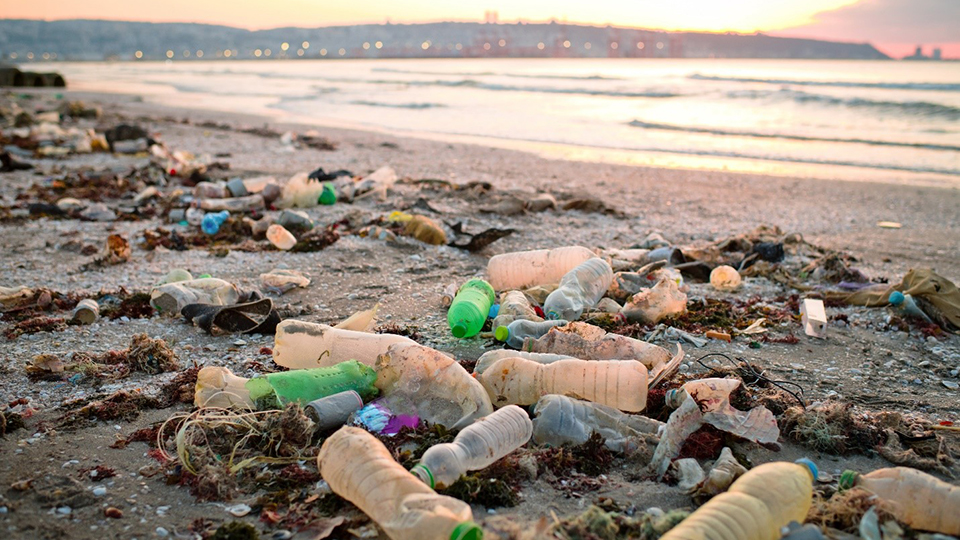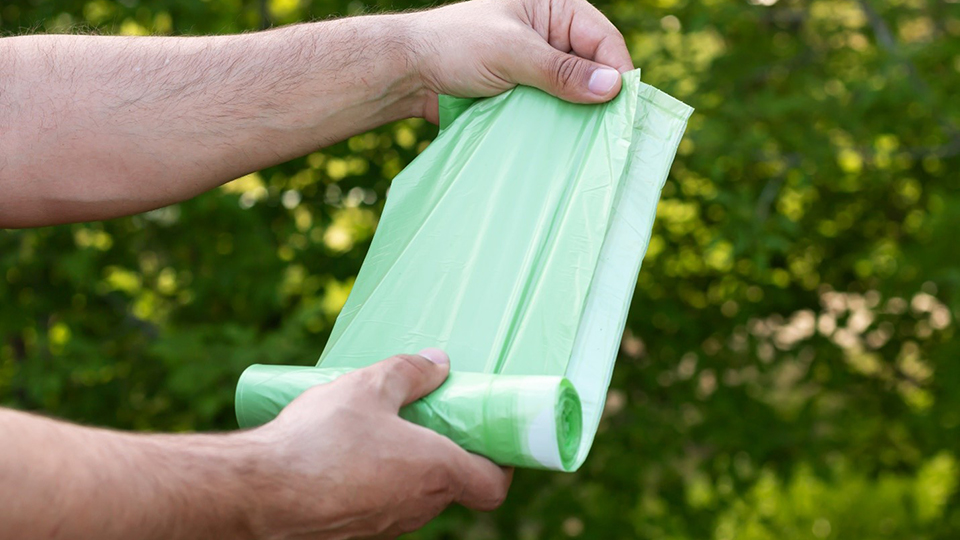

March 13, 2024
The plastics pollution problem is connected to our everyday lives. Annually, about 430 million tons of plastic are produced globally, much of which is used in items we encounter daily. The biggest cause of concern is “single use” plastics, such as the plastic wrapper encasing a chocolate bar, or the disposable utensils accompanying lunches. These common items – often used only for moments – contribute significantly to the increasing volume of plastic waste. A total of 95% of the plastic used in packaging is disposed of after one use, a loss to the economy of up to $120 billion annually which includes the cost of producing these plastics. Developed countries use up to 20 times more plastic per capita than their developing country counterparts.
Each day, oceans, rivers, and lakes receive plastic waste equivalent to over 2,000 garbage trucks. Without decisive action, plastic pollution is on track to triple by 2060. This daunting prospect underscores the urgency of rethinking our relationship with plastic. Accounting for at least 85% of marine litter, plastic’s pervasive presence ranges from beaches to the remote depths of the Mariana Trench, the deepest point in the ocean, where a plastic grocery bag has been seen. This widespread pollution extends its harmful reach into the natural world, affecting various marine species. Plastic remnants have, for instance, been found in the digestive systems of almost every marine turtle species and nearly half of all surveyed seabird and marine mammal species. Microplastics, which are tiny bits of plastics, also pose potential physical and toxicological risks to organisms.

High plastic consumption rate is particularly significant given that plastics represent the largest output of the petrochemical industry. This industry is a major consumer of fossil fuels, utilizing about 14% of the world’s petroleum and 8% of its natural gas, based on 2018 figures put together by the International Energy Agency. For instance, in 2019, 9 million barrels of oil were used every day to produce plastic.
Our current efforts in managing plastic waste are proving inadequate. Of the plastic collected for recycling – a practice many partake in with the hope of making a difference – less than 9% is effectively recycled, with the remainder ending up in landfills, as litter, or being incinerated.
The challenge of effectively recycling plastics is compounded by a multitude of factors. These include, for instance, inadequate collection systems, limited sorting capacities, contamination issues, and quality deficiencies in recycled plastics. The design of plastics used in complex products like electronics and vehicles, the use of heterogeneous plastics in packaging, and the illegal international trade of waste plastic further complicate the recycling process. This complex web of issues underscores the critical need for a more sustainable and efficient approach to plastic production and use, and more innovative sorting and recycling technologies.
Business as usual is unsustainable. Increase in plastic use and waste volumes will amplify adverse consequences for the environment, climate and health. In any event, recycling cannot address climate change concerns; we have to move towards a circular economy and away from single use plastics. The Green Technology Book on mitigation notes that (at pg. 72):
The numbers simply do not add up. For instance, at 9 percent the current rate of plastics recycling will never catch up with the growth in plastic production. This is particularly problematic from a climate perspective, as more than 60 percent of plastic’s emissions occur during plastic pellet production stage. (Footnotes omitted) Therefore, any meaningful mitigation strategy requires a major shift in terms of investments toward a circular economy, with a particular focus on phasing out single-use and unnecessary plastic production.
Global initiatives are underway to confront this issue head on. In March 2022, the United Nations Environment Assembly took a decision to combat global plastic pollution. They agreed to work towards creating an international law that would address the entire life cycle of plastics, recognizing the extensive harm plastic pollution causes to the environment, society, and the economy.
The result is the Intergovernmental Negotiating Committee on Plastics Pollution, which aims to introduce a legally binding international agreement on plastic pollution by the end of 2024. A revised draft text was released by the Committee’s Secretariat in December 2023.
“Green plastics” encompass a variety of more-or-less environmentally friendly alternatives, including biodegradable plastics designed to decompose into water, carbon dioxide, and biomass. Typically derived from renewable raw materials, microorganisms, and sometimes petrochemicals, these plastics, also known as “eco-plastics”, can be partially or entirely made from recycled traditional plastics. “Bioplastics” is another category which derives from biological sources such as vegetable oil and starch rather than fossil fuels. Not all bioplastics are biodegradable. Thus, while the terms “bioplastic” and “biodegradable plastic” are often used interchangeably, there exists a distinct difference between the two.
Biodegradable and bio-based plastics have been championed for some time, but their production currently represents less than 1% of all plastics. Notably, UNEP has previously cautioned that “biodegradable” plastics may result in more littering behaviors due to “a perceived technical fix that removes responsibility from individuals”. WIPO’s flagship Green Technology Book on mitigation also notes that increased consumption of bioplastics is likely to generate GHG emissions from cropland expansion, warranting further innovation in this space.

With the continuous increase in plastic production, limited recycling rates, and a struggling “green plastics” market, it is evident that the most effective solution lies in reducing plastic production. Beyond legislative frameworks and policies, this requires innovation in alternatives that can help reduce plastic demand and change consumer behavior.
The WIPO GREEN database of technologies and needs, which contains nearly 130,000 green technologies, has more than 80 technologies related to plastics recycling, 36 technologies for separating plastics, and 26 technologies in the recently curated “green plastics” collection.
The WIPO GREEN partnership network also brings together a range of key stakeholders, such as multinational companies, academic and research institutions, and intergovernmental organizations. One of WIPO GREEN’s 150+ partners, KAI Corporation, has launched a razor which reduces plastics use in the product by 98%.
Plastic pollution presents a pressing global challenge, exacerbated by the staggering volume of single-use plastics and inadequate recycling efforts. Despite international initiatives aiming to curb plastic waste, the current trajectory points towards a tripling of plastic pollution by 2060, with serious implications for marine life, ecosystems, and public health. Transitioning to a circular economy, reducing reliance on single-use plastics, and fostering innovation in sustainable alternatives are paramount to addressing this crisis effectively.
Sustainability demands a holistic approach that considers the entire lifecycle of plastic, from production to disposal. Collaboration among stakeholders, innovation in materials science, and a shift in consumer behavior towards more eco-conscious choices are crucial in charting a path towards a cleaner and healthier planet.
To upload a technology or information about a green technology need in the WIPO GREEN database, first log in to the WIPO GREEN portal using your WIPO account credentials. You will then have the option to submit a technology or need.
WIPO GREEN is a UN-based, public, free platform that connects seekers of technology solutions to climate change and environmental challenges with solution providers from private, civil society and government sectors. Through its database, networks and acceleration projects, WIPO brings together key players to catalyze green technology innovation and diffusion.